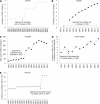Etiology of inflammatory bowel disease: a unified hypothesis
- PMID: 22553395
- PMCID: PMC3332284
- DOI: 10.3748/wjg.v18.i15.1708
Etiology of inflammatory bowel disease: a unified hypothesis
Abstract
Inflammatory bowel disease (IBD), including both ulcerative colitis (UC) and Crohn's disease (CD), emerged and dramatically increased for about a century. Despite extensive research, its cause remains regarded as unknown. About a decade ago, a series of findings made me suspect that saccharin may be a key causative factor for IBD, through its inhibition on gut bacteria and the resultant impaired inactivation of digestive proteases and over digestion of the mucus layer and gut barrier (the Bacteria-Protease-Mucus-Barrier hypothesis). It explained many puzzles in IBD such as its emergence and temporal changes in last century. Recently I further found evidence suggesting sucralose may be also linked to IBD through a similar mechanism as saccharin and have contributed to the recent worldwide increase of IBD. This new hypothesis suggests that UC and CD are just two symptoms of the same morbidity, rather than two different diseases. They are both caused by a weakening in gut barrier and only differ in that UC is mainly due to increased infiltration of gut bacteria and the resultant recruitment of neutrophils and formation of crypt abscess, while CD is mainly due to increased infiltration of antigens and particles from gut lumen and the resultant recruitment of macrophages and formation of granulomas. It explained the delayed appearance but accelerated increase of CD over UC and many other phenomena. This paper aims to provide a detailed description of a unified hypothesis regarding the etiology of IBD, including the cause and mechanism of IBD, as well as the relationship between UC and CD.
Keywords: Crohn’s disease; Dietary chemicals; Etiology; Inflammatory bowel disease; Saccharin; Sucralose; Ulcerative colitis.
Figures






References
-
- Kirsner JB. Historical review: the historical basis of the idiopathic inflammatory bowel disease. Inflamm Bowel Dis. 1995;1:2–26.
-
- Cosnes J, Gower-Rousseau C, Seksik P, Cortot A. Epidemiology and natural history of inflammatory bowel diseases. Gastroenterology. 2011;140:1785–1794. - PubMed
-
- Russel MG. Changes in the incidence of inflammatory bowel disease: what does it mean? Eur J Intern Med. 2000;11:191–196. - PubMed
-
- Ekbom A. The changing faces of Crohn's disease and ulcerative colitis. In: Targan SR, Shanahan F, Karp LC, editors. Inflammatory bowel disease: from bench to bedside. New York: Springer; 2005. pp. 5–20.
Publication types
MeSH terms
Substances
LinkOut - more resources
Full Text Sources
Other Literature Sources

